Groundwater damage was discovered, sufficiently explored and pump and treat was determined as the appropriate remediation route. In coordination with the authorities, the pumping rate and the necessary treatment stages are planned, and the groundwater purification plant (GWRA) is built and put into operation. But what actually happens then?
It should be clarified that GWRAs do not run unobserved for a fixed remediation period and are shut down and dismantled at the end. The remediation period depends, among other things, on the pollutant and its pollutant properties, groundwater recharge and natural pollutant degradation. For targeted remediation, both hydraulic and pollutant monitoring measures are required. Using the example of a pump-and-treat measure, i.e. pumping the polluted groundwater via wells, treating and purifying the raw water and discharging the pure water into the sewer system, directly into the receiving water or back into the groundwater at a suitable location via infiltration wells, the tasks of third-party monitoring are described below.


The plant operator constantly checks the input and output values of the GWRA and carries out maintenance so that the plant is permanently functional. For targeted remediation, to check the plant parameters and to determine optimisation requirements, close-meshed (e.g. monthly) external monitoring is also carried out by an independent company. On the one hand, the influent water pumped to the GWRA is sampled and analysed for the pollutant concerned or accompanying parameters that are important for the operation of the plant (e.g. iron). This makes it possible to estimate how large the pollutant inflow to the plant is. On the other hand, the pure water is sampled and analysed for the parameters relevant to the discharge (in accordance with the water law permit). Depending on the runtime, pollutant behaviour and groundwater availability, the discharge path can be adjusted in the course of operation. The discharge limits may also change after the new water rights permit has been obtained. Depending on the analysis technology used, pollutant-laden air may also be produced, which in turn is purified. In accordance with legal requirements, compliance with the limit values is also checked here. In addition, compliance with the approved extraction and discharge quantities is constantly monitored and the effects of extraction on the groundwater body are assessed. The processed data and findings are regularly submitted to the responsible authorities in the form of a report.
Another part of the external monitoring is the monitoring of the groundwater. For this purpose, groundwater monitoring wells (GWM) are usually set up in the vicinity of the facility or existing monitoring wells from the previous exploration are used. Sampling of the monitoring wells is carried out regularly (e.g. every six months) in order to observe the spread of the damage in the groundwater. Ideally, the contaminant plume will reduce in size as the remediation period progresses. In addition, it is checked whether the entire plume is covered by the production wells or whether the plume has changed its general direction. This can be responded to, for example, by increasing the production rate or building another production well. Through continuous evaluation of the plant data and monitoring results, M&P assists the remediation agency as an external supervisor with optimisation proposals.

